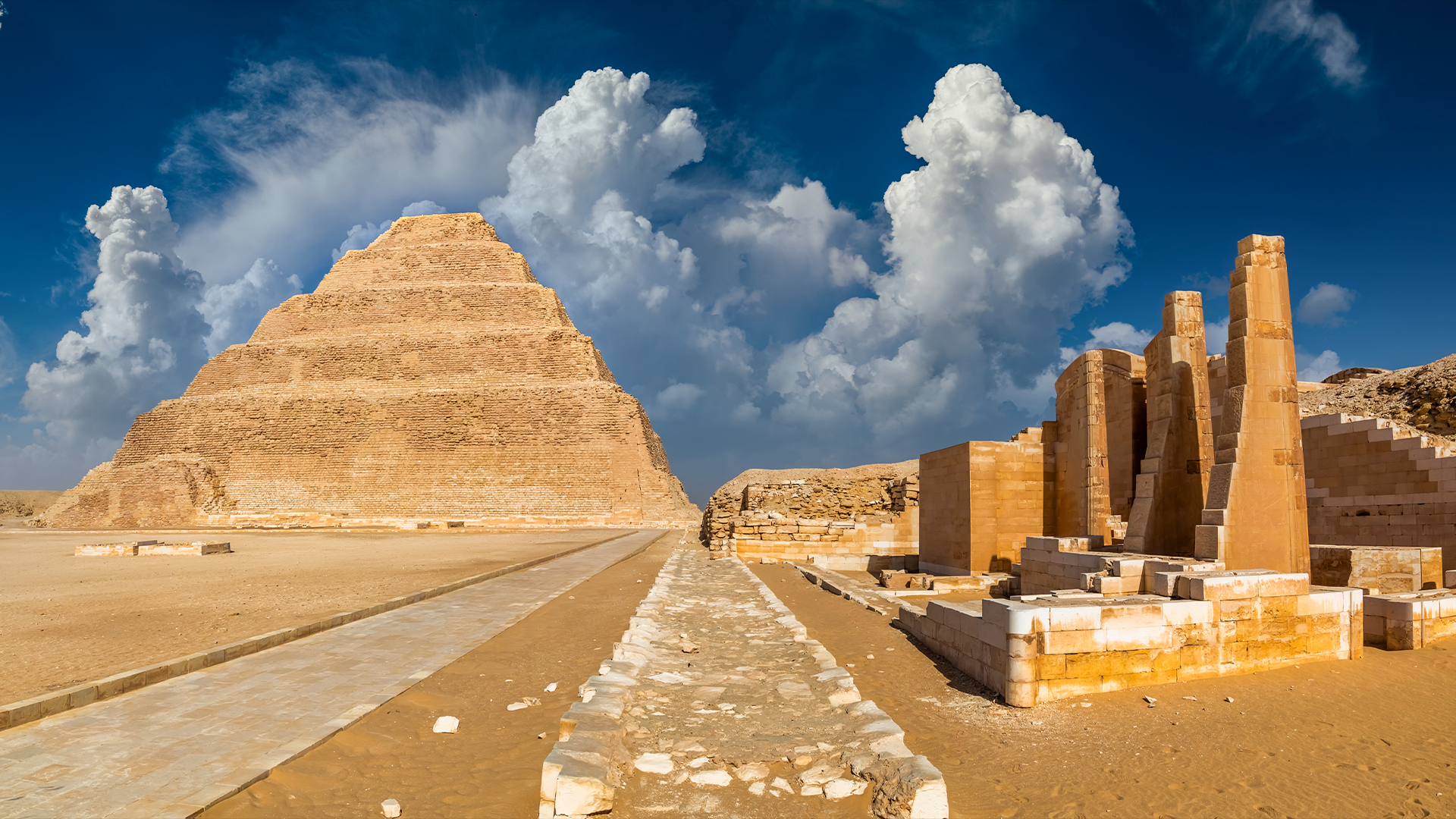
Pyramids are iconic symbols of the ancient pharaohs' power and technological prowess that still dominate the Egyptian skyline. But when were pyramids first built? And why were they constructed in the first place?
The first pyramid in Egypt was built by the pharaoh Djoser, who reigned nearly 4,700 years ago. More than a millennium later, ancient Egypt's last pyramid built for a pharaoh was constructed for Ahmose I around 3,500 years ago. After that, Egyptian rulers were buried in underground tombs in the Valley of the Kings.
Put another way, the ancient Egyptian pyramids were built between about roughly 2700 B.C. and 1500 B.C. This makes the earliest pyramids about the same age as Stonehenge, which was initially built between 4,000 to 5,000 years ago. But the pyramids are much older than other ancient structures, including the Parthenon (447 B.C.), the Great Wall of China (220 B.C.) and the Colosseum (A.D. 80). The Neolithic temple Gobekli Tepe in Turkey, however, is older from 11,000 to 12,000 years ago.
Related: Why does the Rosetta Stone have 3 kinds of writing?
Egypt's first pyramid
Djoser's pyramid is made up of six layers and was originally built as a type of rectangular tomb known today as a mastaba (an Arabic word meaning "bench") before being expanded into a step pyramid.
Ancient inscriptions indicate that a man named Imhotep directed the step pyramid's construction. "Imhotep is usually regarded as the first architect in Egypt to build in stone and is credited with the building of Djoser's step pyramid complex" Marc Van De Mieroop, a professor of history at Columbia University, told Live Science in an email. "There's an inscription with his name combined with that of Djoser in which he is called chief of sculptors. In later ancient Egypt he was considered a sage," Van De Mieroop added.

Why did The Egyptians build pyramids?
Researchers are still unsure exactly why pharaohs chose to use pyramids for their burials.
One reason may have been to provide added protection against tomb robbers. In earlier times robbers plundered pharaohs' low-rising mastaba tombs by burrowing in from the top, Egyptologist Reg Clark wrote in his book "Securing Eternity: Ancient Egyptian Tomb Protection from Prehistory to the Pyramids" (American University in Cairo Press, 2019). The step pyramid, with its six layers on top of each other, would have offered protection from this method, Clark wrote. "Many Egyptologists have suggested that the step pyramid formed a kind of 'stairway' for the king to ascend to the sky, but I suggest that [it was built] because it is the most efficient and economical way to create a virtual 'hemisphere' of protection over the underlying substructure," Clark told Live Science in an email.
Another important innovation was that stone was used to build the step pyramid, whereas the mastabas used by previous pharaoh were made of mudbrick; this was important as stone is harder to infiltrate, Clark noted.
Religious reasons may also have been an important factor. Miroslav Verner, a professor emeritus of Egyptology at Charles University in the Czech Republic, told Live Science in an email that "probably religious reasons were behind" the idea to build pyramids.
When Djoser came to power, the influence of the sun cult and the sun god Ra (also spelled Re) was increasing, Verner wrote in his book "The Pyramids: The Archaeology and History of Egypt's Iconic Monuments" (American University in Cairo Press, 2021). The sun cult's growing influence may have led to a desire to build structures that reached higher into the sky. Verner noted that a passage from a text dating back around 4,400 years said "may the sky make the sunlight strong for you, may you rise up to the sky as the Eye of Re" (translation by Raymond Faulkner).
One question is whether a growing interest in the sun cult brought about the construction of the step pyramid, or whether the construction of the step pyramid brought about an increasing interest in the sun cult. "What came first, the egg or the chicken?" Massimiliano Nuzzolo, a researcher at the Institute of Mediterranean and Oriental Cultures of the Polish Academy of Sciences in Warsaw, told Live Science in an email.
Nuzzolo thinks that interest in the solar cult grew after the construction of the step pyramid. "This incredible architectural enterprise may have also affected and somehow even pushed for a change in the religious ideology, eventually reflected on a major emphasis on the solar aspects of the kingship," Nuzzolo said.

Built for a millennium
Whatever the reasons for building pyramids, Egyptian pharaohs constructed them for more than a millennium. The pharaoh Sneferu (reign circa 2575 to 2551 B.C.) built the first true pyramids (pyramids with flat sides) at Dahshur. These consisted of the Bent Pyramid (so named because of its unusual angle) and the Red Pyramid (named after its color). The Great Pyramid at Giza, the only one of the seven ancient wonders of the world that still stands, was built by Khufu (reign circa 2551 to 2528 B.C.) while Khafre (reign circa 2520 to 2494 B.C.) built another large pyramid, along with the Great Sphinx, at Giza.
It's not clear why Egyptian pharaohs stopped building pyramids, but security concerns may have been part of it. Despite likely being harder to loot than mastabas, Egyptian pyramids were plundered in ancient times, and pharaohs may have hoped that building their tombs in the Valley of the Kings would make them harder to ransack. Additionally, the topography of the valley has a peak that today is called el-Qurn (sometimes spelled Gurn), which looks a bit like a natural pyramid.







